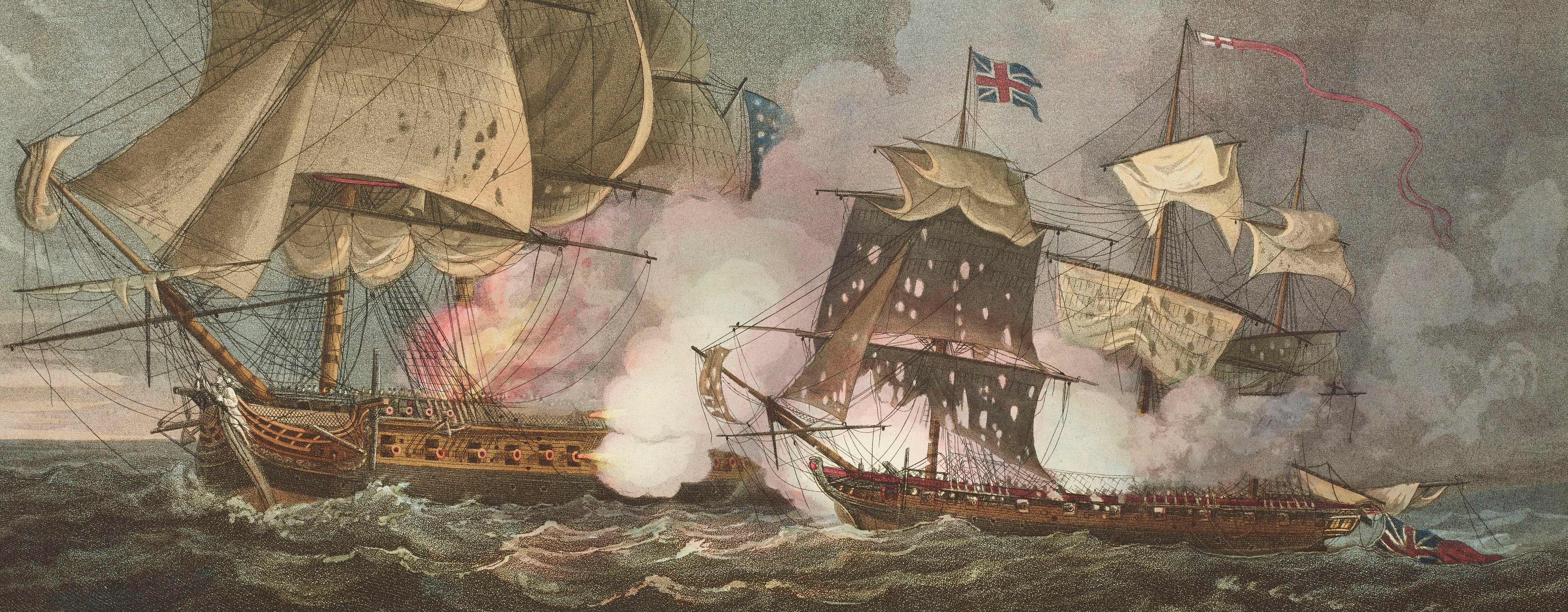
Other 18th-/19th-century conflicts
Maps, views and documents from 19 wars
Map of encampment at Fort Augustus, 1746 (Fort Augustus, Highland Region, Scotland, UK) 57°08'35"N 04°40'56"W
1746 or laterPen, ink and watercolour on paper; laid down on linen | Scale: 1:7,200 approx. | RCIN 730047
There is no evidence on the recto or verso of the map for the date of 26 May 1746 which is given in the old heading. However, if the date of 23 May for the camp at Dores (RCIN 730044) is accurate, then three days for the 50 km march from Dores to Fort Augustus would be a reasonable hypothesis.
Cumberland's HQ is shown near Fort Augustus, with the old barracks to the south-west. The course of the rivers is depicted with some care and seven crossing places are marked. The rendering of the hills gives a realistic impression of the landscape in this area, foreshadowing the work of Paul Sandby on the military survey of Scotland just five years later.
The encamped regiments comprise 11 battalions of foot: Barrel's (4th Foot, Lieutenant-General William Barrell, Colonel, 8 August 1734-9) ; Dejean (37th Foot, Lieutenant-General Louis Dejean Colonel 9 April 1746-52); Wolfe (possible 8th Foot; Lieutenant-General Edward Wolfe, Colonel, 25 April 1745-59); Houghton (24th Foot; Brigadier-Genereal Daniel Houghton, Colonel, 21 June 1746-7), Conaway (Field Marshal Hon. Henry Seymour Conway, Colonel, 6 April 1746-9), Skelton (12th Foot, Lieutenant-General Henry Skelton, Colonel, 28 May 1745-57), Bligh (20th Foot; Lieutenant-General Thomas Bligh, Colonel, 26 December 1740-9 April 1746, when Sackville took over; see RCIN 730044, where Eyres names this regiment after Sackville); Cholmondley (34th Foot, General the Hon. James Cholmondley, Colonel, 18 December 1742-9); Howard (possibly the 19th Foot, General the Hon. Sir Charles Howard, Colonel, 1 November 1738-48); Price (14th Foot, Brigadier-general John Price, Colonel, 22 June 1743-7) together with Kingston's Horse and the Artillery. All dates are taken from Leslie (1974).
Condition: one fold line; brown staining and foxing to both sides. Verso: top left, pronounced water-stained patch and shrinkage of linen backing from removal of Cumberland's label which was underneath the linen backing, a substantial portion of the periphery of the label remains.
William Eyres (d. 1764) (surveyor and draughtsman) [bottom right, below title and scale, inside neatline:] Will: Eyres Engin.r
Subject(s)
Army-GBPrince William Augustus, Duke of Cumberland (1721-65)Watermark: Horn on crowned shield, a ‘4’ suspending the initials GR below; countermark: HR
Mark, stamped: 524
Condition: one fold line; brown staining and foxing to both sides. Verso: top left, pronounced water-stained patch and shrinkage of linen backing from removal of Cumberland's label which was underneath the linen backing, a substantial portion of the periphery of the label remains
Scale: 1:7,200 approx. Scale bar: Scale [706 mm =] 600 yards.
37.3 x 47.0 cm (image and neatline)
37.9 x 47.5 cm (sheet)
Manuscript title:
PLAN of the CAMP / at / FORT AUGUSTUS [bottom right, in rectangular panel]
Annotations:
George III heading: Encampment at Fort Augustus 26 May 1746.
Other annotations: (Recto) none. (Verso) [bottom left, ink or black pencil, obscured by linen:] 20; [bottom right, black pencil:] May 26 1746; [centre, red pencil, obscured by linen:] 26.
George III catalogue entry:
Encampment A drawn Plan of the Encampment of His Majesty’s Army under the command of the Duke of Cumberland at Fort Augustus, the 26.th May 1746: by Lieut. W.m Eyres Eng.r. [The same entry appears under the heading Augustus, Fort.]
Subject(s)
Fort Augustus, Highland Region, Scotland, UK0( 57°08'35"N 04°40'56"W)
Bibliographic reference(s)
N.B. Leslie, The succession of Colonels of the British army from 1660 to the present day, London, 1974
Page revisions
23 April 2025
Current version






